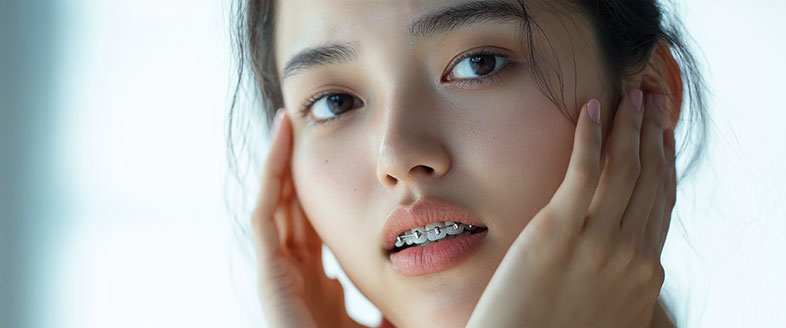Considering braces? You might wonder about changes to your face shape, especially concerns about "braces face"—thinner cheeks, more prominent cheekbones, or sunken temples.
While the idea of a one-size-fits-all "braces face" is a myth, braces do cause changes to your face. The good news is these changes are often positive, improving both bite and appearance. These changes, like improved facial symmetry and a more defined jawline, contribute to a healthier and more aesthetically pleasing smile. Let's explore the specific ways braces can impact your face.
How Do Braces Actually Work?
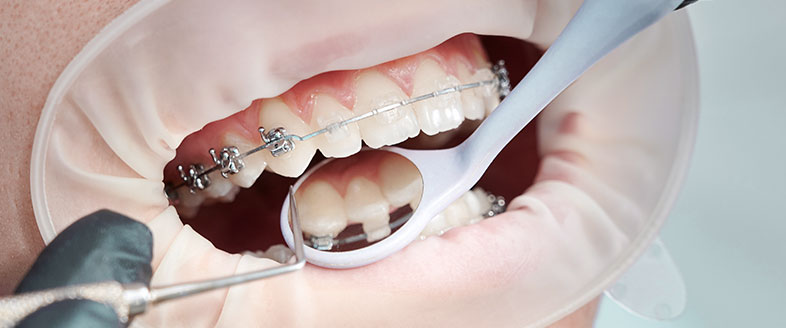
Braces work by applying a gentle but constant force to teeth, gradually causing them to shift into their correct positions. Each tooth gets its own metal (or ceramic) bracket, and a thin wire that connects them together.
The most important mechanics that make this possible are:
But how do our teeth move so much?
Although our teeth appear fixed in place, they are surrounded by gum tissue at the top and a network of flexible fibres called the periodontal membrane (or PDL) at the bottom. This dynamic structure allows for movement, and the magic happens through bone remodelling.
Each tooth is socketed in our jawbone, with the bottom part encased by the PDL and the alveolar bone. Pressure from the archwires on the sockets causes teeth to loosen, triggering bone remodelling. Think of the membrane as the messenger between the tooth and the bone, constantly trying to maintain normal spacing between them. The bone around the teeth breaks down and rebuilds, and the teeth shift with the pressure.
Just a small amount of sustained pressure is enough, such as the regular adjustments you get at your orthodontic appointments.
This process takes time. The bone breakdown process starts within a few days, but the bone rebuilding process can take several months. After all the shifting, the new bone structure takes up to a year to stabilise (which is why you'd be asked to wear a retainer to ensure your new smile stays in place!).
Can Braces Change Your Face Shape?
The short answer is yes, it isn’t just a myth. Braces can change your face, and other orthodontic treatments (e.g. tooth extraction) required before applying braces can change your skeletal features.
Depending on your unique needs, your orthodontist might focus on correcting an overbite, underbite, crossbite, or other alignment issues. We'll break down the answer into the different parts of the face that can be affected, including your jawline, cheeks, lips, and smile.
Do braces improve your jawline?
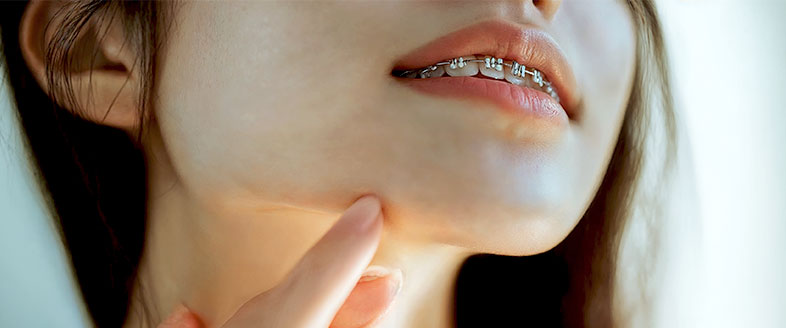
Those with an overbite or underbite might notice a positive change in their overall facial features as the jawline assumes a more natural position.
Noticeable changes in jawlines tend to occur with expansion appliances (to widen the jaw), functional appliances (to correct bite problems) eg: elastics or rubber bands, or surgery.
Overbite
An overbite is when the upper teeth overlap too much above the bottom teeth. It can give an individual the appearance of an undefined lower jaw, weak chin, buck teeth, and a lack of harmony between teeth and lips. Correcting an overbite will reduce the noticeable appearance of the upper jaw and improve overall chin and jawline appearance.
Underbite
Meanwhile, an underbite gives the appearance of a lower jaw that sticks out. About 5% to 10% of people have an underbite. In some individuals, it looks as though their jaw or chin looks longer, and their cheeks may appear sunken. Braces can shift the jaw for a more pleasing facial contour, especially in the chin area.
Braces, along with orthodontics elastics and appliances, can help with most bite corrections, but for severe bite problems, surgery may be required.
Can braces change your cheekbones?
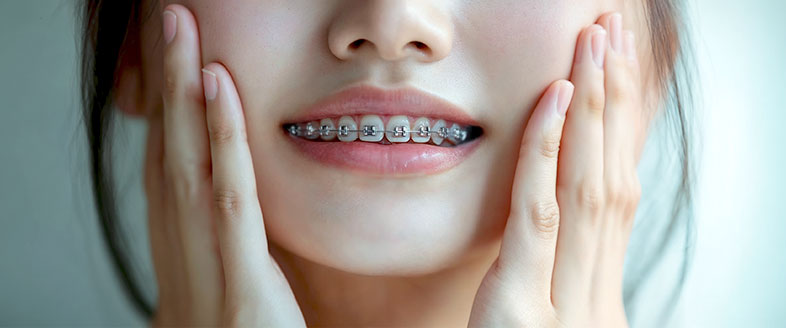
Bite issues and uneven spacing between teeth impact how the cheeks are supported and how the cheekbones appear. In individuals with underbites, their cheekbones can appear more pronounced (sharper and more defined) after braces. By correcting spacing and alignment issues, the cheeks may rest more naturally and give the appearance of a balanced, full smile.
Findings from this study concluded that:
Changes in facial soft tissues during orthodontic treatment are affected by many things, like your age, gender, initial facial structure, how long the treatment lasts, and the type of braces used. New technology and methods in orthodontics are constantly being developed to ensure that the treatment looks good, works well, and has minimal negative side effects.
Does orthodontic treatment change your lips or mouth shape?
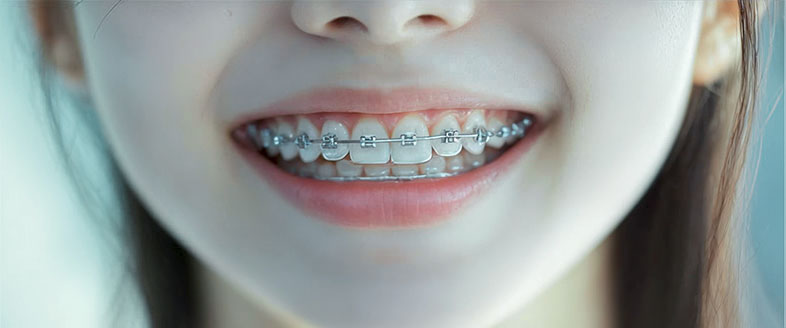
Braces treatment influences how your lips and mouth appear, depending on the underlying facial changes.
Can my smile change after braces?
After having braces, your smile will change, mainly for the better. A large part of your smile is facial symmetry, so having aligned, straight teeth makes a difference to your facial shape, especially from the front. Your smile may appear less crowded depending on your treatment and whether you had any teeth extractions.
Are Braces Suitable for Me? Get Professional Dental Advice On Braces
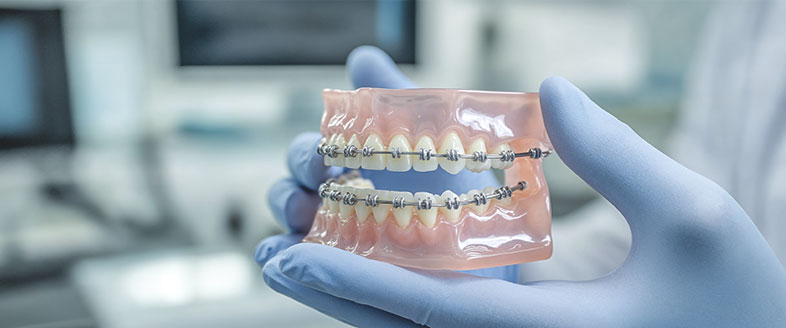
While there may be debate on whether braces can change your face shape, they have led to positive changes for most people. Braces are the most effective way to straighten teeth and transform your smile.
It is also equally important to understand that braces are not just for aesthetics, but they also make an impact on your oral health. With braces, it improves speech, makes it easier to maintain good oral hygiene (which reduces chances of gum disease), and reduces TMJ (temporomandibular joint) issues.
Worried about discomfort or badly performed braces?
At dePacific, our dentists are committed to a professional, caring, and gentle approach to help you get the best possible smile. We will prioritise both aesthetics and dental health, creating a balanced treatment plan for your unique facial structure and bite.
Learn more about our braces treatment or Invisalign (clear braces)—your journey to a confident, healthy smile starts here!

